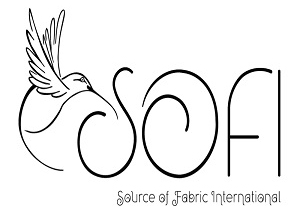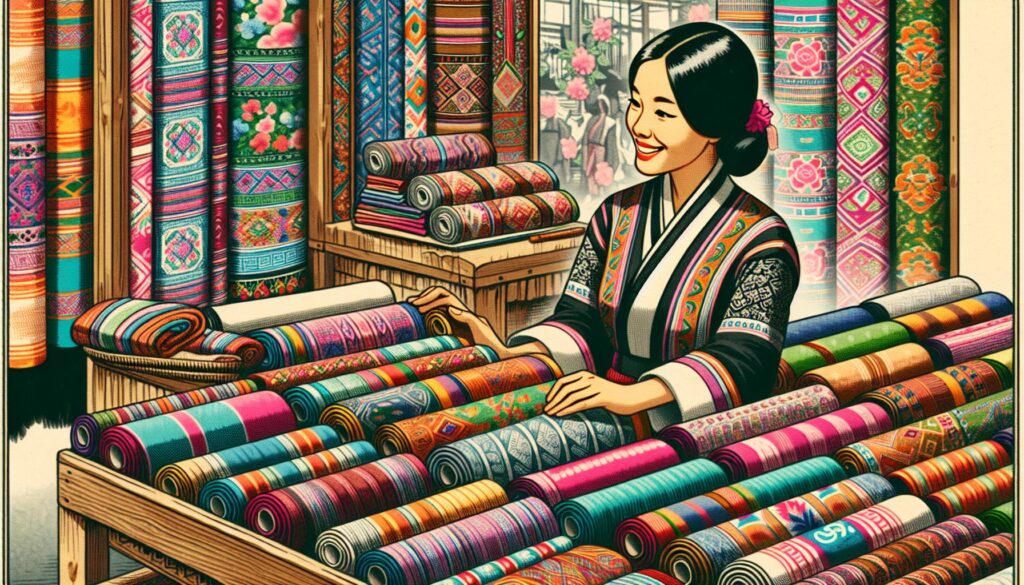Hmong fabric is more than just material; it’s a vibrant tapestry of culture and tradition. Known for its intricate patterns and rich colors, Hmong textiles have captured the attention of designers and artisans worldwide. As the demand for unique and authentic fabrics grows, wholesale options have become a vital resource for those looking to incorporate these stunning textiles into their projects.
Exploring Hmong fabric wholesale opens a world of possibilities for creators and businesses alike. From fashion designers to home decor enthusiasts, sourcing these beautiful fabrics in bulk not only enhances creativity but also supports the artisans who craft them. Understanding the nuances of Hmong textiles can lead to exciting collaborations and innovative designs, making it an essential topic for anyone in the fabric industry.
Overview of Hmong Fabric Wholesale
Hmong fabric plays a significant role in the textile market due to its rich cultural background and unique designs. Each piece reflects the traditional art and skill of Hmong artisans. Wholesale options are essential for businesses looking to source these fabrics efficiently.
Sourcing fabric in bulk provides various benefits. Businesses can obtain a wider variety at competitive prices, allowing them to create diverse product lines. Bulk purchasing also fosters a direct relationship with artisans, supporting their craft and communities.
Understanding the types of Hmong fabric available is crucial. Common types include cotton and silk, each with its distinct characteristics. Cotton is versatile and sturdy, suitable for various applications. Silk offers a softer feel and is often used for more delicate items.
Hmong fabric wholesale not only serves global markets but also promotes cultural appreciation. By integrating these textiles into their products, designers honor the artisans’ traditions while appealing to consumers’ growing interest in unique and handmade goods.
The Importance of Hmong Textiles
Hmong textiles hold important cultural and artistic value. These fabrics stand out due to their rich traditions and craftsmanship that reflect the identity of the Hmong people.
Cultural Significance
Hmong textiles serve as a medium for storytelling and heritage. Each piece features patterns and colors that symbolize history, beliefs, and community. These textiles are integral to ceremonies, celebrations, and daily life, often passed down through generations. Using Hmong fabric helps preserve this cultural legacy while introducing it to broader audiences.
Traditional Techniques
Hmong artisans employ age-old techniques to create their textiles. Techniques like batik, embroidery, and weaving contribute to the distinctive look of Hmong fabric. Each method requires skill and patience, ensuring that each piece is unique. By sourcing Hmong textiles, businesses support these artisans and promote traditional craftsmanship, ensuring these valuable skills continue for future generations.
Sourcing Hmong Fabric Wholesale
Sourcing Hmong fabric wholesale involves finding quality materials while supporting artisans. Businesses can benefit from bulk purchases that provide competitive prices and diverse options.
Finding Reliable Suppliers
Finding reliable suppliers for Hmong fabric is crucial. Start by researching reputable companies that specialize in Hmong textiles. Attend craft fairs or textile shows to meet sellers in person. Online platforms like marketplaces also list various suppliers. Checking reviews and requesting samples helps confirm quality before bulk orders.
Pricing and Quality Considerations
Pricing and quality serve as key factors when sourcing Hmong fabric wholesale. Prices vary based on materials, designs, and supplier relationships. Comparing quotes from multiple sources helps ensure competitive pricing. Assessing the quality of fabric through touch and sample pieces is essential; this guarantees that textiles meet project needs. Selecting high-quality materials means a better final product and a lasting relationship with suppliers.
Popular Hmong Fabric Varieties
Hmong fabrics stand out for their vibrant patterns and rich colors, making them popular choices in various applications. Many varieties of Hmong fabric serve different needs, from fashion to home decor.
Patterns and Designs
Hmong textiles feature bold patterns, often reflecting cultural themes and stories. Common designs include geometric shapes, floral motifs, and vibrant color combinations. Each pattern serves a purpose, symbolizing beliefs and traditions. Artisans use these elements to express identity and heritage, ensuring that each fabric holds significance. The intricate craftsmanship involved results in unique pieces that are appreciated by designers and consumers alike.
Common Uses in Fashion and Decor
Hmong fabric finds its place in numerous fashion and decor applications. Many designers use these textiles for clothing items like skirts, jackets, and accessories. The vibrant designs attract consumers looking for unique, handmade pieces. Furthermore, Hmong fabrics are popular in home decor, featured in items such as cushions, wall hangings, and table runners. Their eye-catching colors and patterns bring character to living spaces, appealing to those interested in cultural and artistic decor.
Challenges in Hmong Fabric Wholesale
Hmong fabric wholesale faces several challenges that impact suppliers and buyers alike.
Market Competition
Market competition in the textile industry is significant. Many businesses seek quality Hmong fabrics to meet demand. New suppliers enter the market frequently, making it tough for established businesses to maintain their edge. Pricing becomes more competitive, which can squeeze profit margins for sellers. Buyers often compare various options, leading to pressure for suppliers to lower prices or enhance value through improved service or quality.
Sustainability Concerns
Sustainability concerns pose challenges for Hmong fabric wholesalers. Consumers are increasingly aware of environmental impacts. Many demand eco-friendly practices in sourcing, production, and distribution. Suppliers must adopt sustainable methods, such as using natural dyes and responsible materials. If suppliers fail to address these concerns, they risk losing customer trust and market share. Adapting to these requirements can add costs and complexity to the supply chain.
Conclusion
Hmong fabric wholesale presents a unique opportunity for businesses to access culturally rich textiles while supporting skilled artisans. By sourcing these fabrics in bulk, designers can create distinctive products that resonate with consumers’ appreciation for handmade goods. Whether you’re looking for fabric online, linen fabric, bolts of fabric, cotton fabric, or designer fabric, these textiles offer vibrant patterns and intricate designs that enhance fashion and home decor while telling meaningful stories rooted in Hmong heritage.
As the demand for sustainable practices grows, suppliers who adapt to these changes will thrive in a competitive market. Order fabric in bulk to embrace the artistry of Hmong textiles, leading to innovative collaborations that celebrate tradition and craftsmanship. Investing in Hmong fabric, including bullet fabric, is more than just a business decision; it’s a commitment to preserving cultural heritage and fostering community connections.
Frequently Asked Questions
What is Hmong fabric and why is it significant?
Hmong fabric is a textile that features intricate designs and vibrant colors, deeply rooted in the cultural traditions of the Hmong people. Its significance lies in its storytelling aspect, showcasing the history and beliefs of the community. The global demand for these unique textiles highlights their importance in preserving Hmong heritage.
How can businesses benefit from Hmong fabric wholesale?
Sourcing Hmong fabric wholesale allows businesses to access a diverse range of textiles at competitive prices. By purchasing in bulk, companies can enhance their product offerings while directly supporting Hmong artisans, promoting cultural appreciation, and fostering long-term supplier relationships.
What types of Hmong fabric are available?
Common types of Hmong fabric include cotton and silk, each with distinct characteristics suitable for various applications. These fabrics often showcase bold patterns and cultural themes, making them ideal for use in fashion items and home décor products.
How do Hmong textiles serve cultural purposes?
Hmong textiles play a vital role in cultural expression, reflecting the community’s history and traditions. Each piece often features symbolic patterns and colors, making them integral to ceremonies, storytelling, and everyday life, fostering cultural identity and continuity.
What should businesses consider when sourcing Hmong fabric?
Businesses should research reliable suppliers and attend craft fairs or textile shows to connect with reputable sellers. It’s essential to compare quotes, assess quality through samples, and consider the unique characteristics of the fabrics to meet their specific project needs.
What challenges exist in Hmong fabric wholesale?
Challenges include market competition, which can pressure established businesses to maintain pricing, and sustainability concerns raised by consumers. Suppliers must adopt eco-friendly practices and natural materials to stay competitive while balancing costs and supply chain complexities.
How can Hmong fabric enhance design projects?
Integrating Hmong fabric into design projects adds unique cultural elements and aesthetic appeal. The rich patterns and colors inspire creativity, allowing designers to create distinctive products that reflect both artistry and respect for Hmong traditions, resonating with consumers seeking originality.


